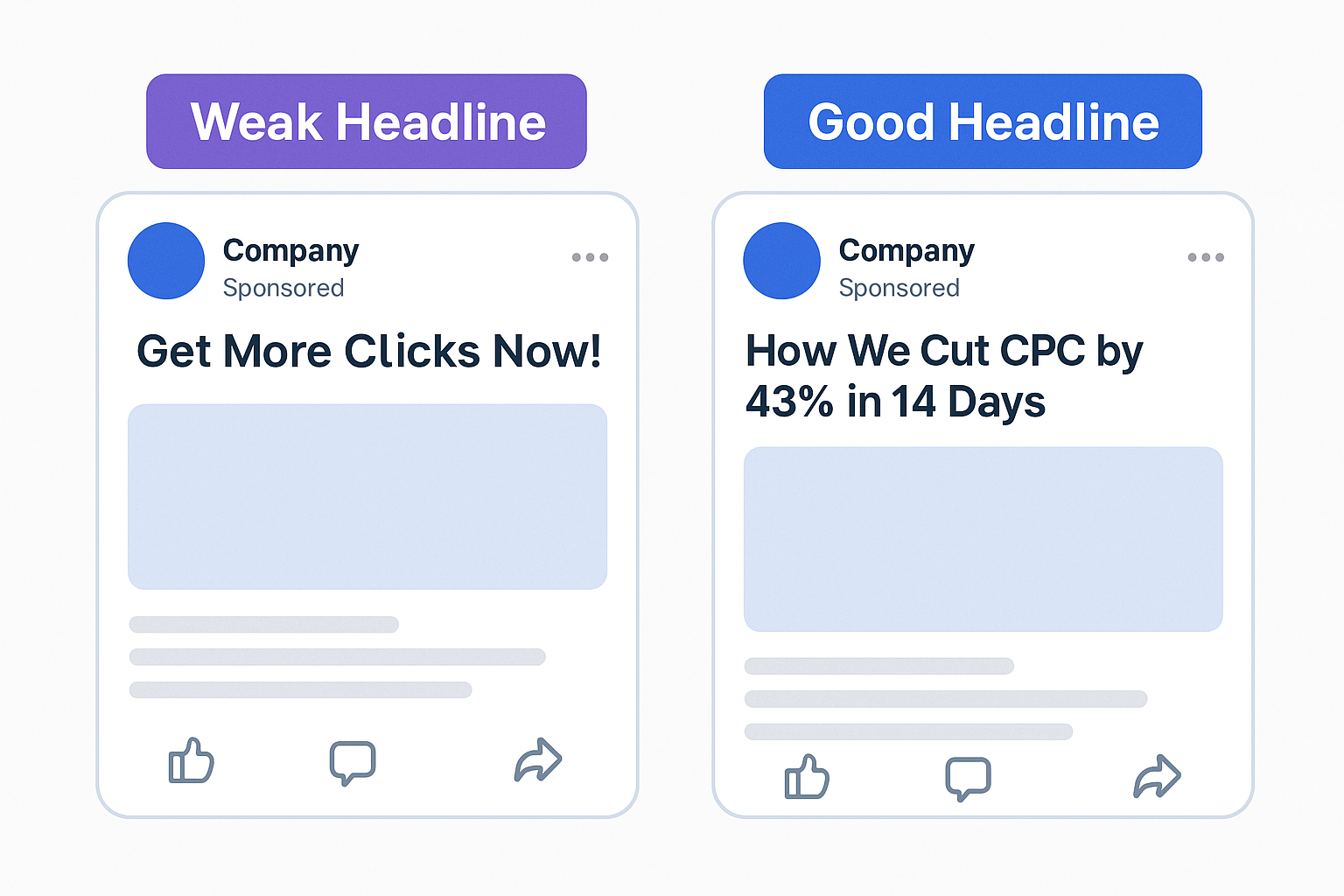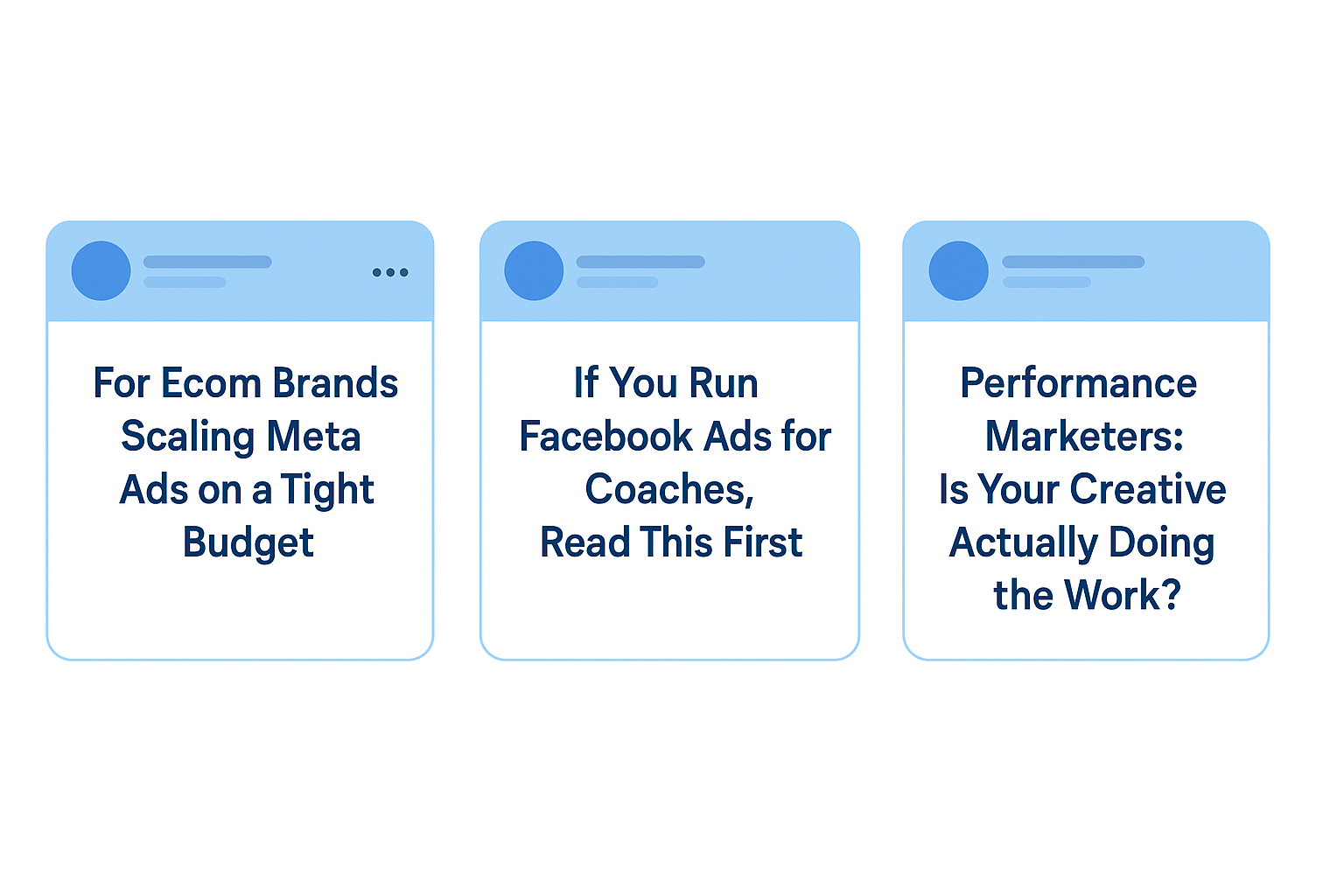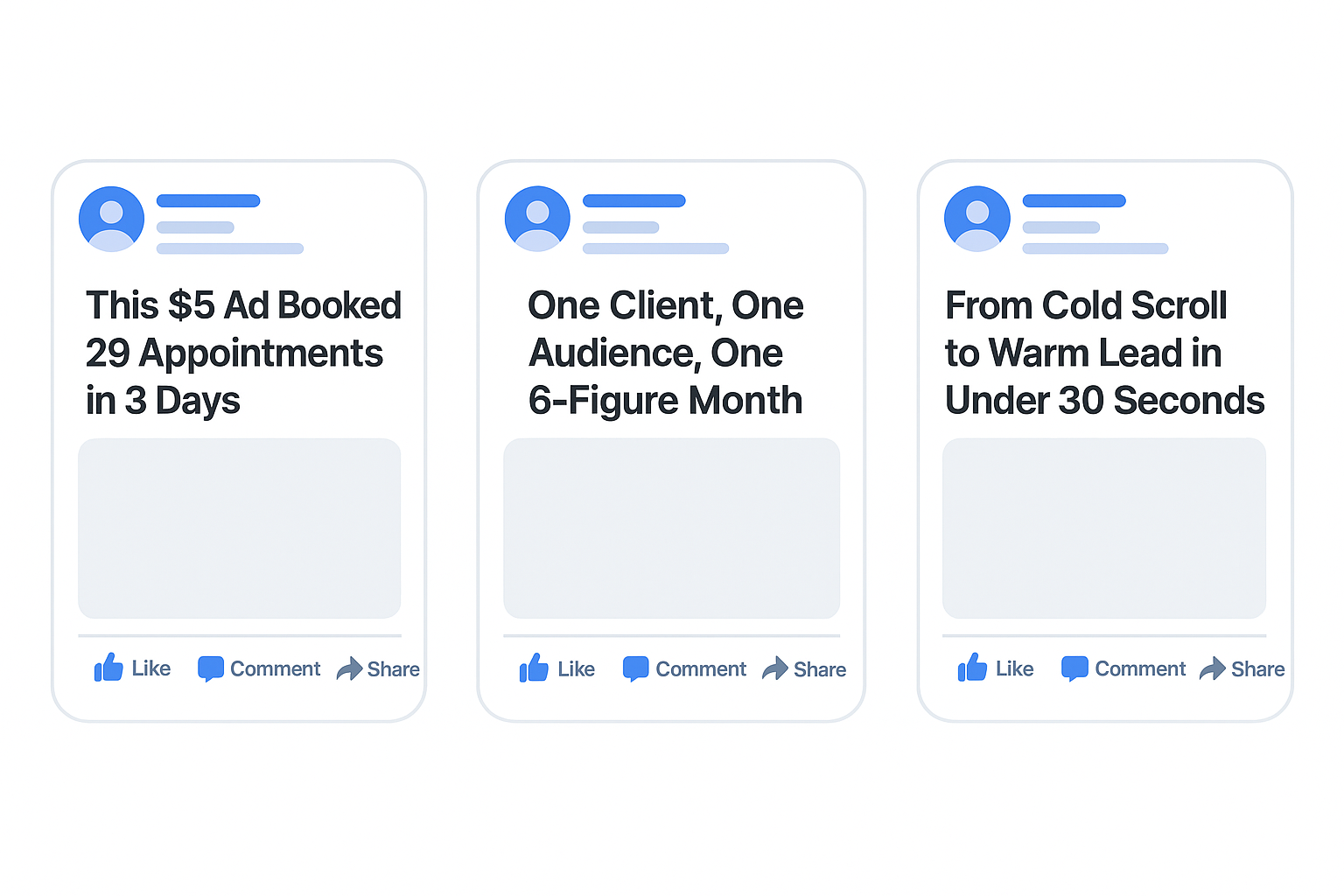When it comes to Facebook advertising, the headline is often overlooked. Too many marketers obsess over creative, copy, and even button text — but forget that the headline is the first thing many users scan.
Think of it as the filter. A strong headline stops the scroll and earns attention. A weak one blends into the feed and wastes your budget.
Let’s explore proven headline formulas that consistently drive higher click-through rates — along with when and why to use them.
1. Ask Questions That Mirror Audience Frustrations
Questions can interrupt pattern-based scrolling behavior. But vague, open-ended ones rarely work. The key is to ask a question your audience is already thinking — something that reflects their challenge or curiosity.
Examples:
-
"Still Struggling With Facebook Ad Fatigue?";
-
"What’s Causing Your ROAS to Drop Month After Month?";
-
"Is Your Targeting Costing You Conversions?".
These aren’t just rhetorical. They match the exact thoughts running through advertisers’ heads.
For practical tips on writing scroll-stopping copy that converts, read Crafting Compelling Facebook Ads Copy That Converts.
2. Use Quantifiable Results to Build Instant Trust
Quantified claims build credibility and capture attention fast. If your ad promises better results but can’t back it up, it won’t perform. Instead of vague benefits, use actual numbers, timeframes, or benchmarks.

Formulas that perform:
-
"How We Reduced CPL by 43% in Just 14 Days";
-
"3 Optimization Tweaks That Boosted ROAS by 2.3x";
-
"This Retargeting Sequence Cut Cart Abandonment by 61%".
For more ideas on why CTR often fails and how to fix it, check out How to Solve Low Click-Through Rates (CTR) on Facebook Ads.
3. Add Time-Based Pressure Without Sounding Salesy
Scarcity and urgency have been used (and abused) in marketing for years. But when done right, time pressure helps frame your offer as relevant now — not someday.
Effective variations include:
-
"Fix This Ad Mistake Before You Launch Again";
-
"Generate Better Leads This Week — No Budget Increase Required";
-
"Q4 Audiences Are Already Warming Up — Here’s What to Do First".
These examples don’t scream "limited time." Instead, they use time-related language to make action feel necessary and timely.
4. Call Out the Audience with Precision
A high-performing headline doesn’t appeal to everyone. It speaks directly to a specific group, using identifiers they recognize immediately.

Examples:
-
"For Ecom Brands Scaling Meta Ads on a Tight Budget";
-
"If You Run Facebook Ads for Coaches, Read This First";
-
"Performance Marketers: Is Your Creative Actually Doing the Work?".
Need help defining your target audience? Use this step-by-step guide to audience definition to refine your messaging.
5. Shift the Focus From Features to Fixes
Audiences respond to solutions, not software updates. Instead of leading with what your tool does, lead with the result it produces.
Poor example:
-
"New Creative Testing Dashboard Now Live".
Improved versions:
-
"Test Winning Creatives Without Burning Your Budget";
-
"Easily Compare Hooks, Offers, and Formats — All in One View".
This approach is especially effective when your delivery is underperforming. Learn why in Why You See 'Ad Set May Get Zero' on Facebook and How to Fix It.
6. Use Visual Language That Sparks Mental Images
Text-based headlines can still be visual — if you use specific, action-oriented phrasing. Headlines that trigger imagery are often more memorable and more clickable.

Examples:
-
"This $5 Ad Booked 29 Appointments in 3 Days";
-
"One Client, One Audience, One 6-Figure Month";
-
"From Cold Scroll to Warm Lead in Under 30 Seconds".
This storytelling-style structure pairs well with a curiosity element or data point, especially in mobile video ads.
7. Build Curiosity — but Anchor It in Real Insight
Curiosity drives clicks, but shallow or misleading headlines kill trust. A great headline hints at what’s inside — but doesn’t overpromise.
Curiosity headlines that work:
-
"The Overlooked Targeting Layer Most Advertisers Miss";
-
"Why Your Highest-Performing Creative May Be Hurting ROAS";
-
"The Optimization Strategy Nobody Talks About — but Everyone Should Use".
For more on how to use emotional hooks and subconscious triggers, read The Psychology of Facebook Ads: How to Hook Your Target Audience in Seconds.
Bonus: Test and Refine Everything
The best headline isn’t always the cleverest — it’s the one that gets clicked. Testing small variations is where performance lives or dies.
To go deeper into systematic copy testing, explore The Benefits of Testing Facebook Ad Copy Variations for Better Performance.
Also, if you're looking to structure your headline using classic persuasion models, check out Copywriting Formulas for Facebook Ads: AIDA, PAS, and Beyond.

